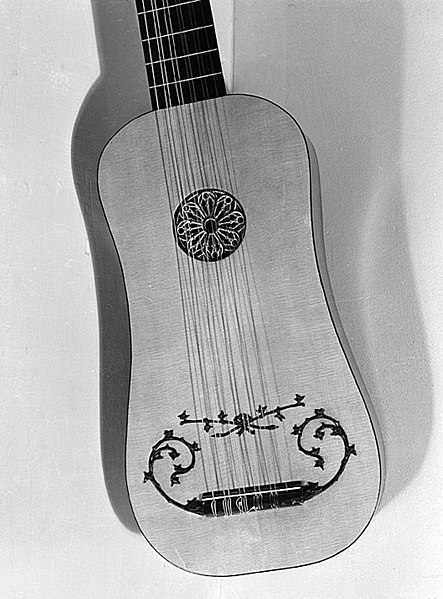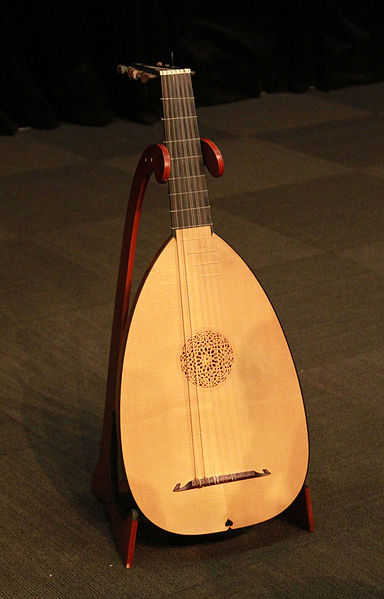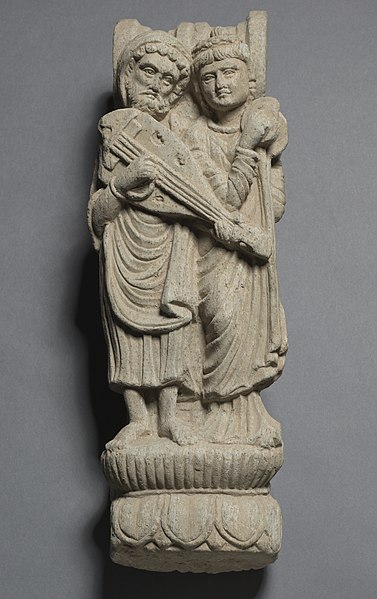The vihuela is a 15th-century fretted plucked Spanish string instrument, shaped like a guitar but tuned like a lute. It was used in 15th- and 16th-century Spain as the equivalent of the lute in Italy and has a large resultant repertory. There were usually five or six doubled strings.
Vihuela reproduced by Khalil Gibran in the mid–20th century
Viola da mano, detail from an engraving by Marcantonio Raimondi, was made before 1510. It depicts poet Giovanni Filoteo Achillini playing the instrument
Spain, c. 960 a.d. "Cytharas" (identified from text) with players strumming with fingers (de mano) and plucking with plectrum (de penola). From Commentary on the Apocalypse, Morgan Library, Ms 644.
Spain, "second third of 10th century". Violas de arco played with a bow. Calling them "de arco" (with bow) indicates that other types exist. From Commentary on the Apocalypse, Codice VITR 14.1.
A lute is any plucked string instrument with a neck and a deep round back enclosing a hollow cavity, usually with a sound hole or opening in the body. It may be either fretted or unfretted.
Renaissance lute in 2013
Ancient Egyptian tomb painting depicting players with long-necked lutes, 18th Dynasty (c. 1350 BC).
Hellenistic banquet scene from 1st century A.D., Hadda, Gandhara. Lute player with short-necked lute, far right.
Lute in Pakistan, Gandhara, probably Butkara in Swat, Kushan Period (1st century-320)








